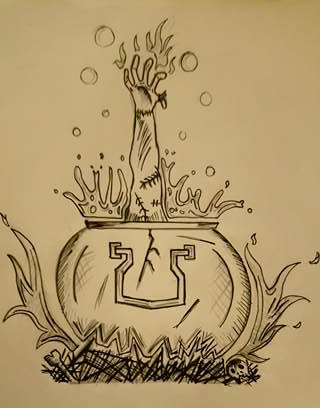This is part of some series of blog posts i intend to write about Economics in D&D and fantasy in general. By economics, I don’t mean inflation or GDP or government spending, I’ll mostly be talking about concepts like fiat currency, pricing, resource allocation and demographics.
Sadly, an enormous percentage of D&D world building is lazy when it comes to the thinking about economics. The reason for this is that most run of the mill high fantasy hand waves these sort of questions and replaces them with quasi-mediavel tropes.
However, the base assumptions of D&D setting entirely deviate from what happened in the real world in 11th to 16th centuries. This means the resulting society would be different. Anything that sits at being quasi-medieval does not cut the cake in terms of making sense with a fantasy world. The way we think about money, population structure and employment is entirely different once you add dungeons and/or dragons to the mix.
Population Structure
The vast percentage of the medieval population in Middle Ages Western Europe was engaged in feudal substance agriculture. Largely unaffected by war, these people just tended to farm grain, vegetables, chickens and cattle and get on with their lives. This leads to the village aesthetic of many D&D campaigns. There is a village with 100 or so farmers, as well as a blacksmith, a ye-olde shoppe, a carpenter and a chapel with a level 1 cleric who can cast Cure Wounds and Detect Good and Evil. There might even be a wizard’s tower nearby.
This assumption is entirely wrecked by the existence of low level evil humanoids, such as Goblins, Orcs, Bugbears, Gnolls etc. These raiders will be constantly attacking and harrying villages, which are largely defenceless against them. Essentially, a large militarised population lives within your borders and you are constantly at war with them.
The closest equivalence I can think of is Dark Ages England, but if the Saxons/Vikings lived in your forest and in massive cave networks under your towns, rather than coming over on boats from Germany and Scandinavia. I also feel like the emphasis for the Vikings was more on stealing things than murdering people for fun, which is what most Orcs get up to in their free time. I may be wrong about this.
This has a number of effects on the population. Villages as we think of them no longer exist. I imagine that most of the populace would move into walled townships.
The dominant profession is no longer farming, but a defensive military. Vast numbers of local guardsmen are required to defend civilisation from constant attacks. Less people working in the fields means less food, which means less population.
Civilisation shrinks. Everything becomes more centralised in terms of government. People are forced into specialisation due to narrower population.
I imagine the optimum version of this is a less extreme version of an Attack on Titan Style walled city that is a few hundred kilometres wide, but building a wall of that size is probably a waste of time when tunnels just go under it.
This also mucks with price lists. Food is more expensive than it should be. Weapons and armour are much cheaper, as a huge percentage of the population is trained and armed .
This all depends on the assumption that goblins exist. How extreme would this have to be if dragons exist in any quantity?
